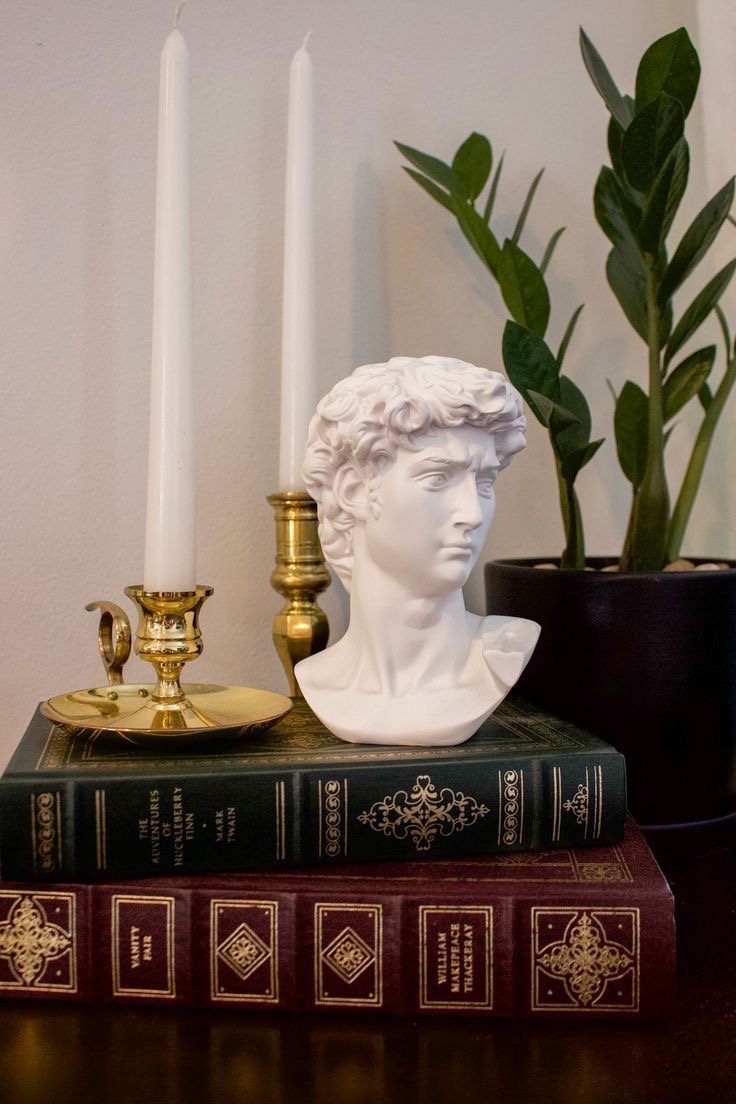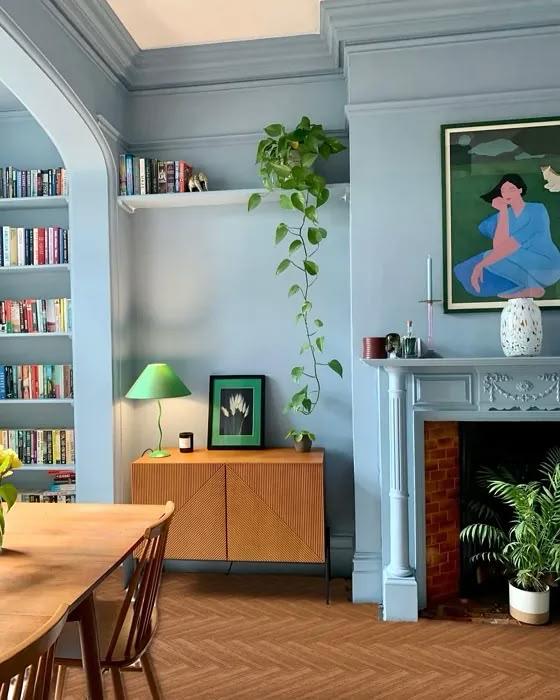
Hellenistic interior design
The Hellenistic interior design trend was popularised in the late 1970s by Italian fashion designer Gianni Versace so it’s no surprise that the look is synonymous with the over-the-top opulence of the ’80s, where life was a party that nobody wanted to end.
The Hellenistic design (or Greek chic) celebrates the Greek gods and goddesses’ strength, resilience, and individuality while simultaneously bringing out the carefree spirit of Ancient Greece with its vibrant colours and bold patterns. Corinthian columns, marble statues, and olive wreaths are all common motifs in Hellenistic design.
The great thing about the Hellenistic style is that it can be as subtle or bold as you want it to be. Think ancient Roman busts, vines, fresh flowers, brass, palm leaf imagery, white pedestal bowls, and oversized urn-shaped vases.
With its mix of bold colours, patterns, and textures, Hellenistic interior design is the perfect way to add a little bit of Ancient Greece to your home. So, if you’re looking for a way to spice up your space, look no further than the Hellenistic Revival.
With that said, you can go all out and cover your walls in a hand-painted mural of Ancient Greek gods or keep it simple with some well-placed greenery, ceramics, and brass accents.
Start by finding some key pieces that represent Ancient Greece. This can be anything from a simple urn-shaped vase to a work of art with an Ancient Greek theme.
Incorporate some elements from the Mediterranean into your design. This can be anything from blue and white tiles to a Moroccan-inspired rug.
Also, incorporate bold colours like yellow, blue, and green while calmly complimenting them with soothing creams, off-whites, and beiges to make you feel like you’re sitting at a restaurant patio overlooking a stunning view of the Mediterranean sea.
Don’t just decorate your space; decorate your walls. Corinthian crown moulding and trim will set your area apart from the rest. Don’t forget the Corinthian columns either – these can be used as actual architectural elements in your home or simply as decorative accents.
Go for neoclassical design of furniture. It’s all about choosing bold, dramatic pieces that will wow your guests. Choose that oversized armchair or chandelier that you’ve always wanted. Ancient Greek art is characterised by realism and idealism. This is the perfect opportunity to add some unique artwork to your home.
Hellenism is about being unapologetically extra and enjoying life’s finer things.

Colours and Sense of Belonging
I have always believed that interior design is about creating a sense of belonging in our homes, make it a place where everyone feels safe, respected, and included. Choosing the right colour can certainly help to foster that feeling of tranquillity and well – being.
Colour psychology studies had shown how colours affect human perception, behaviour, and emotions. It assigns emotional and psychological connotations between colours and emotions. Many of these meanings are universal because they have an effect on the brain, but some are only cultural.
Whether you like a colour frequently depends on childhood memories and your association between colours and feelings. If your mother made you wear yellow one day and your classmate’s made fun of you, yellow is not likely to be your favourite colour as an adult. Sometimes a hue can have many connotations for you. For example, you may choose to wear an orange blouse one day because:
It lifts your mood
You are ready to act
You are feeling creative
Here are some ways in which room colour can affect our wellbeing:
Warm colours like red, orange, and yellow can create a sense of energy and warmth, while cool colours like blue and green can promote calmness and relaxation. Bright and vibrant colours can uplift our mood and create a sense of happiness, while muted or pastel shades can have a soothing effect.
Colours can also influence how we perceive the size and layout of a room. Lighter colours tend to make a space feel more open and spacious, while darker colours can make a room feel smaller and cozier. This can impact our comfort level and sense of freedom within a space.
It’s crucial to consider your personal preferences when selecting room colours. Individual experiences, cultural background, and personal associations with colours can vary, resulting in different emotional and psychological responses to specific colours. Choose colours that resonate with you and create a positive environment that supports your wellbeing.
Here are some tips for applying colour therapy to your home:
- Design an accent wall featuring a fun, vibrant colour to lift your mood. You can also add some playfully patterned wallpaper for a fun pop.
- Create a colourful gallery wall filled with a variety of artwork and framed photos. Use different-coloured frames for a fun visual effect.
- Use pops of colour in your home by adding décor that helps wellbeing like colourful throw pillows, area rugs, baskets, or a few decorative sculptures.
- Try some LED strip lights or lightbulbs that change colour or look for mood lights you can program via a Bluetooth app to set the tone.


